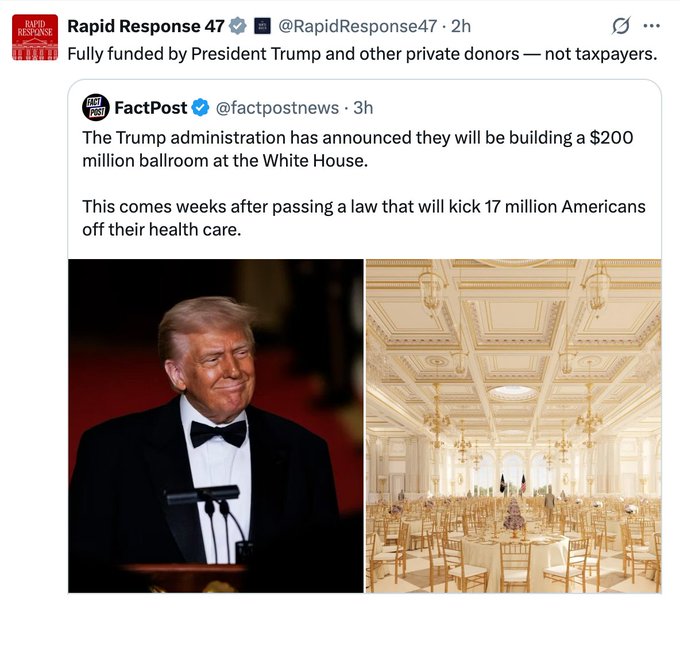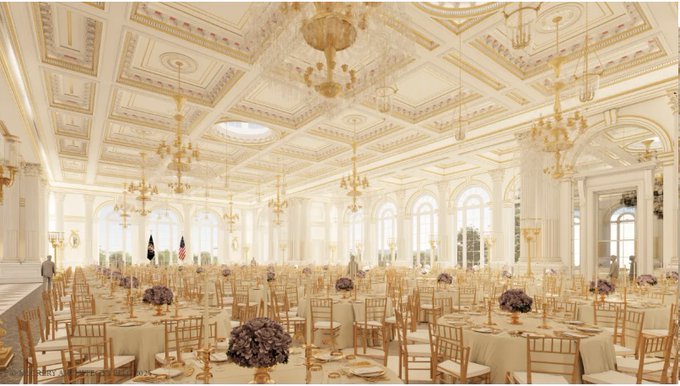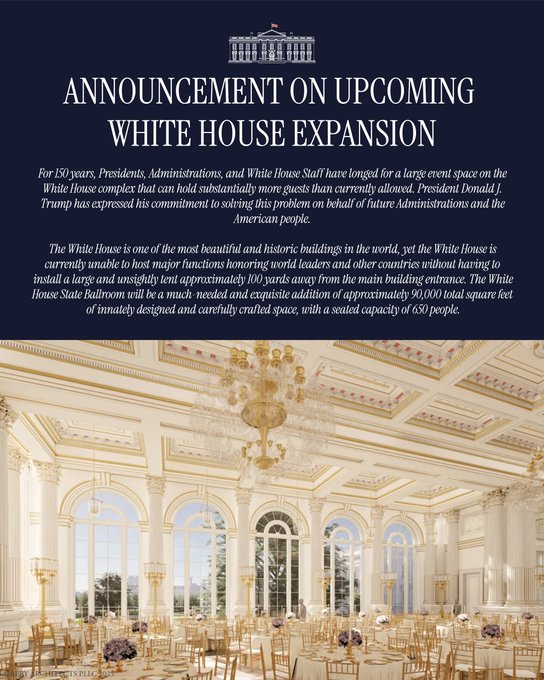The new White House ballroom is making headlines as one of the most ambitious additions to the presidential residence in decades. Announced in July 2025, this state ballroom is designed to redefine event hosting at the White House, marking a significant shift in how the U.S. welcomes leaders, celebrates milestones, and hosts its most prestigious gatherings. In this article, discover the details, history, design vision, and the key figures—like Trump and Press Secretary Karoline Leavitt—behind this high-profile project.

The White House Ballroom: A Vision Realized
For years, U.S. presidents have hosted grand events within the East Room or under temporary tents on the South Lawn. However, the limitations of space and the lack of a permanent, dedicated event venue sparked calls for an upgrade. The white house ballroom answers that call.
In July 2025, President Trump unveiled the plan for a $200 million, 90,000-square-foot ballroom as the crown jewel adjoining the East Wing. This venue will seat up to 650 guests—over three times the capacity of the existing East Room—elevating the White House’s ability to host state dinners, diplomatic receptions, and historic celebrations.

Essential Characteristics and Standout Features of the White House Ballroom
- Size and Capacity: Approximately 90,000 square feet; accommodates 650 guests, making it the largest indoor gathering space in White House history.
- Location: Attached to a modernized East Wing, replacing the need for unsightly outdoor tents.
- Design: Opulent interiors with gold and crystal chandeliers, ornate columns, marble flooring, coffered ceilings, and arched windows overlooking the South Lawn for unmatched ambiance.
- Construction Timeline: Breaks ground in September 2025, aiming for completion before the end of President Trump’s current term in January 2029.
- Funding: Privately financed by Trump and undisclosed patriotic donors at an estimated cost of $200 million.

Why Build a White House Ballroom?
According to Press Secretary Karoline Leavitt, who played a central communication role in the announcement, the ballroom is a “much needed and exquisite addition.” She emphasized its value not only for protocol and state events but for practical reasons—eliminating “large and unsightly tents” that have previously been used for major gatherings. President Trump regularly shared his vision: “No president had the insight to develop a ballroom. I am good at building things,” underlining his intent to create a beautiful legacy for future generations.
Bold Design Inspired by Trump’s Signature Style
The proposed Trump ballroom at the White House is influenced by his personal establishments like Mar-a-Lago and Turnberry, showcasing a taste for rich, classical design. The firm McCrery Architects, known for its classical approach, and Clark Construction are tasked with ensuring the ballroom both honors the White House’s heritage and delivers modern functionality.
Architectural renderings and released images highlight:
- Massive gold and crystal chandeliers.
- Gilded Corinthian columns and gold-accented coffered ceilings.
- Marble floors in intricate patterns.
- Three walls adorned with arched windows overlooking the South Lawn.
- A Palladian-style facade on the exterior, echoing the White House’s neoclassical roots.
Current and Future Impact
This white house ballroom is expected to leave a lasting mark, both aesthetically and functionally. For 150 years, administrations have desired a flexible event space. The new ballroom addresses those needs—enabling larger, more comfortable state functions and potentially increasing the White House’s standing as a premier venue in the U.S.
White House Ballroom: Facts and Figures Table
| Feature | Details |
| Announced | July 31, 2025 |
| Estimated Completion | Before January 2029 |
| Size | 90,000 sq ft (approx. 8,400 sq m) |
| Capacity | 650 guests |
| Location | Next to/enhancing East Wing |
| Design Firms | McCrery Architects, Clark Construction, AECOM |
| Key Features | Gold chandeliers, marble, arched windows, columns |
| Main Funders | Trump, private donors |
| Replaces Old Venues | East Room (200 seats), outdoor tents |
| Press Secretary | Karoline Leavitt (main spokesperson) |
Role of Karoline Leavitt: Communicating the Ballroom Vision
Currently holding the title of the youngest press secretary in the nation, Karoline Leavitt has taken on the role of managing the media presentation for the ballroom project. She has promoted its aesthetic and functional significance, addressed difficult questions about the presidential legacy, and highlighted the administration’s commitment to transparency and vision.
FAQs About the White House Ballroom
What is the White House ballroom’s purpose?
To serve as a permanent, elegant venue for major White House events—replacing temporary tents and the smaller East Room and accommodating up to 650 guests.
When will the White House ballroom be completed?
Construction commences in September 2025, with completion aimed before the end of Trump’s term in 2029.
Who is funding the White House ballroom?
It is funded by private donations—primarily from President Trump and supporting donors, not federal taxpayer money.
How does the ballroom change the White House?
It modernizes the East Wing, expands event capabilities, and instills a new sense of luxury without compromising architectural heritage.
What is Karoline Leavitt’s role?
As White House press secretary, Karoline Leavitt communicates the project’s progress and significance, becoming the public face of the initiative.
How does the design reflect Trump’s influence?
The gold and marble opulence draws on his style at Mar-a-Lago and Turnberry, but the architect claims it also respects the neoclassical theme of the White House.
Final Take: A Lasting Legacy
The new white house ballroom combines grandeur, history, and modern needs. Driven by President Trump’s vision, implemented under the watchful communication of Karoline Leavitt, and shaped by world-class designers, it is set to be a defining feature for both the building and modern presidential legacies. For anyone interested in American politics, architecture, or the ever-evolving story of the White House, the ballroom’s construction is a trend worth watching as it unfolds over the next few years.
Read more article please click on the Link.